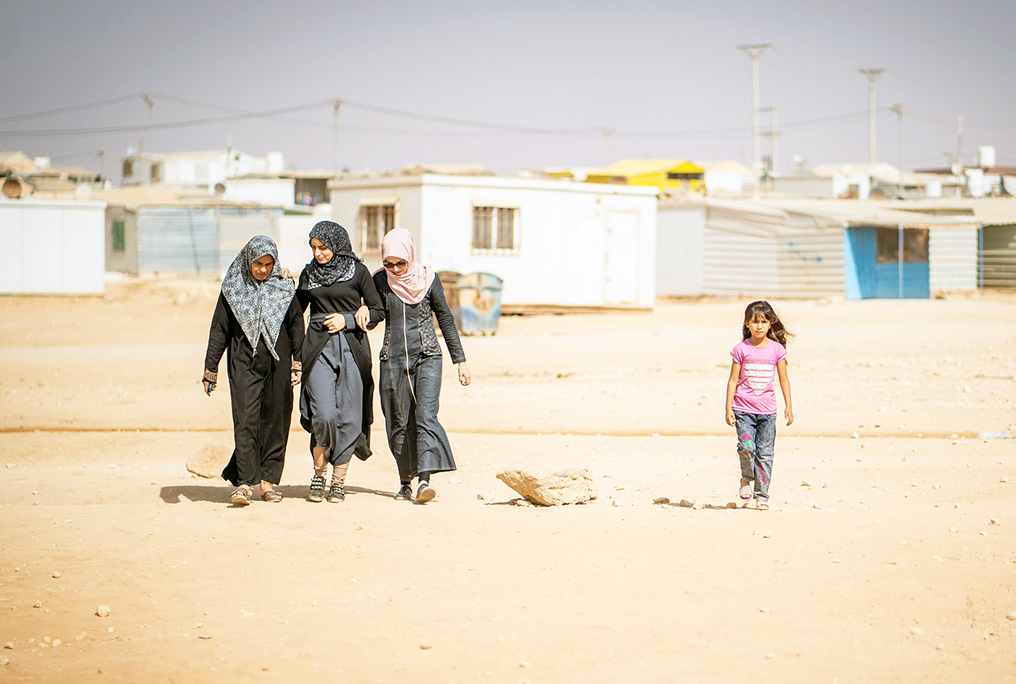 In our course Gender, Space and Culture led by Dr Apen Ruiz, the students are introduced to the various approaches and assumptions that are implicit in the phrase “Gender and Development”. They learn to critically examine how gender hierarchies and stereotypes about gender are set in place in development discourses and practices as well as what policies and institutions have been set in place both nationally and internationally to advocate for gender justice. Looking at case studies from the Global South to illustrate the debates in this field, women’s work in the economy, gendered labour practices, the sexual division of labour within the household are some of the topics discussed. Besides focusing on development issues, one of the core issues of this core is how to use gender as a central category of analysis with regard to the participation in urban contexts, and how the so called “refugee crisis” could be understood from a gender perspective.
In our course Gender, Space and Culture led by Dr Apen Ruiz, the students are introduced to the various approaches and assumptions that are implicit in the phrase “Gender and Development”. They learn to critically examine how gender hierarchies and stereotypes about gender are set in place in development discourses and practices as well as what policies and institutions have been set in place both nationally and internationally to advocate for gender justice. Looking at case studies from the Global South to illustrate the debates in this field, women’s work in the economy, gendered labour practices, the sexual division of labour within the household are some of the topics discussed. Besides focusing on development issues, one of the core issues of this core is how to use gender as a central category of analysis with regard to the participation in urban contexts, and how the so called “refugee crisis” could be understood from a gender perspective.
 This is especially relevant considering the statistics that women and girls make up around 50% of any refugee, internally displaced or stateless population. Over 80% of Syrian refugees are women and children. Disasters like the 2004 tsunami took a disproportional death toll in women. Yet, very few papers and articles on refugees or disaster relief focus on gender or feminist aspects. So how can bring a gender aspect to theoretical and institutional frameworks and define gender sensible interventions?
This is especially relevant considering the statistics that women and girls make up around 50% of any refugee, internally displaced or stateless population. Over 80% of Syrian refugees are women and children. Disasters like the 2004 tsunami took a disproportional death toll in women. Yet, very few papers and articles on refugees or disaster relief focus on gender or feminist aspects. So how can bring a gender aspect to theoretical and institutional frameworks and define gender sensible interventions?
 Here are some of the recommendations how we can use a gendered approach in research and design agendas:
Here are some of the recommendations how we can use a gendered approach in research and design agendas:
– Move from women’s needs to women’s rights
– Analyze the distinct impact of humanitarian crises on the life of girls, boys, women and men
– Obtain valuable gender disaggregated data. Often, sex-age disaggregated data is missing for displaced persons and refugees.
– Go beyond an exclusive focus on issues such as reproductive health or gender-based violence.
– Approach gender broadly
– Be careful about local contexts
– Listen to women’s voices
– Refugees are multidimensional human beings (race, gender, class, religion, age etc.)
 The learning outcomes include the ability to examine how gender works as an analytical category, to understand gender and sexual diversities in different cultures, to analyze how gender intersects with other forms of differences, and to cultivate critical reflections about gender and cultural stereotypes.
The learning outcomes include the ability to examine how gender works as an analytical category, to understand gender and sexual diversities in different cultures, to analyze how gender intersects with other forms of differences, and to cultivate critical reflections about gender and cultural stereotypes.
Feature Image: Jordan. Za’atari Refugee Camp. October 2018. UN Women Arab States, Creative Commons Licensed.
Other Images: Jordan. Za’atari and Azraq Refugee Camp. October 2018. UN Women Arab States, Creative Commons Licensed.

